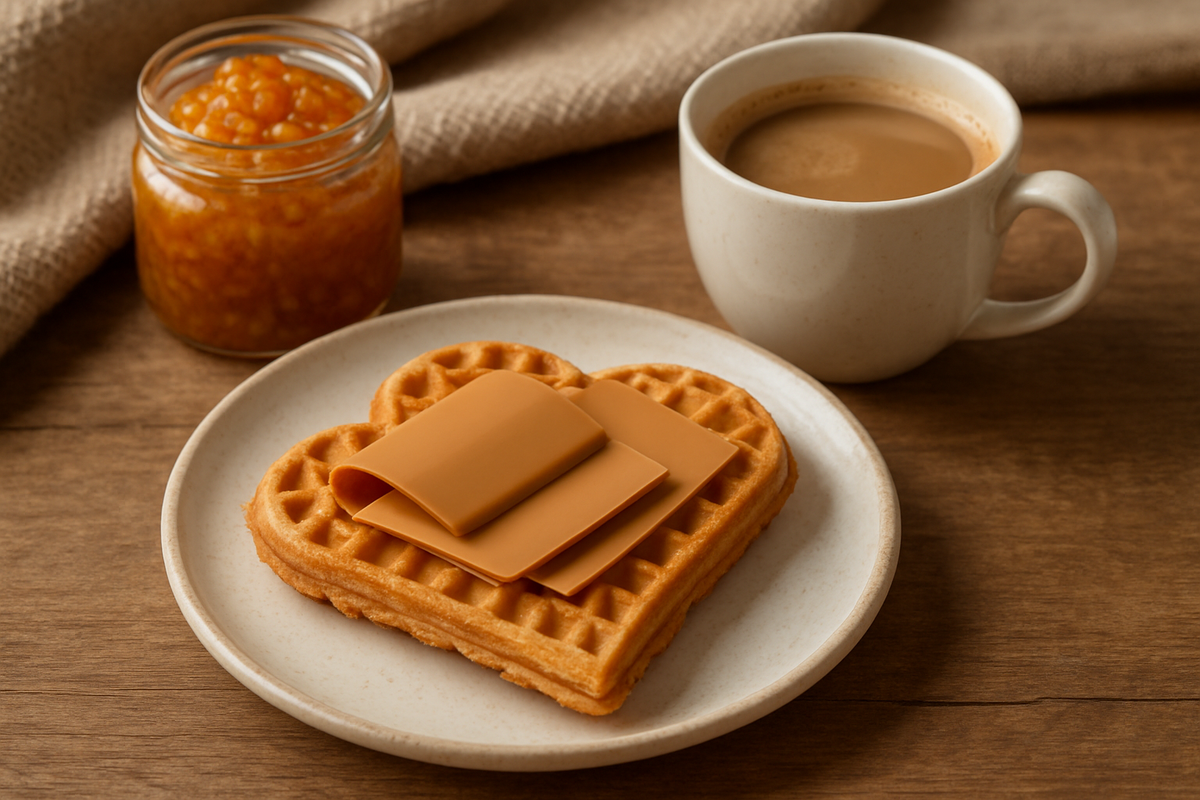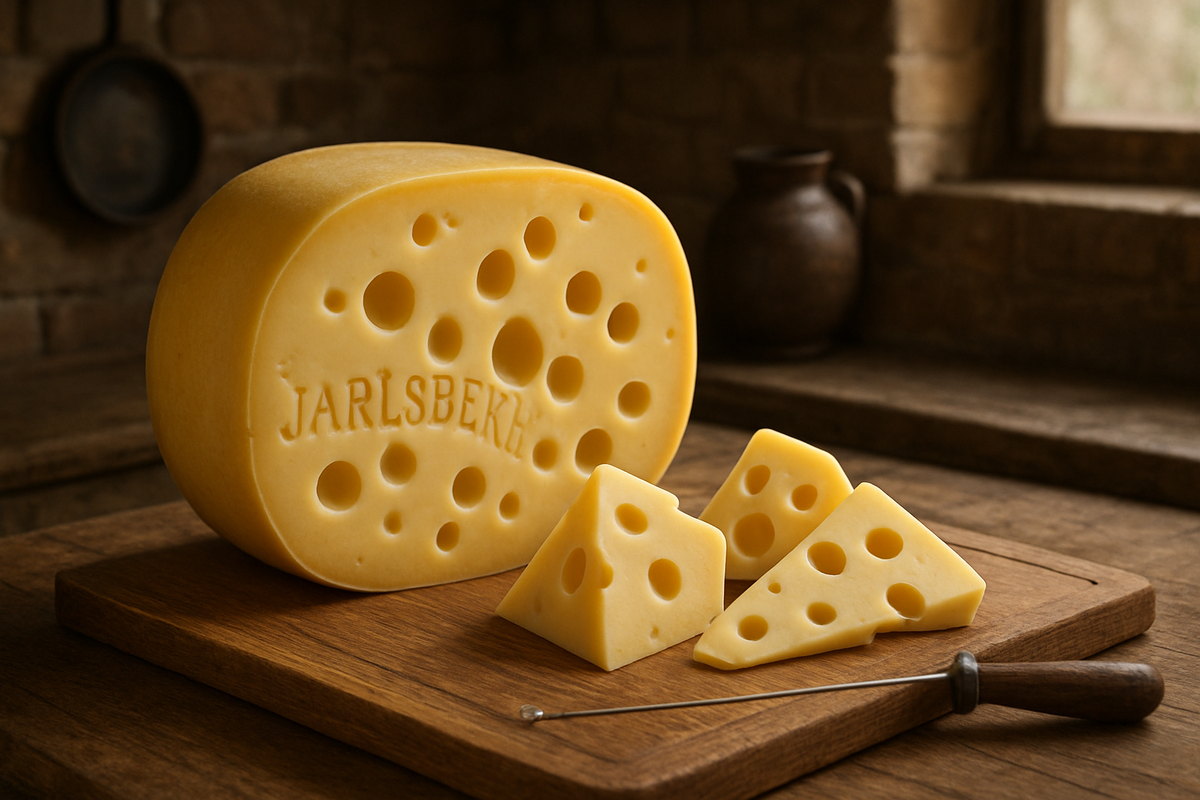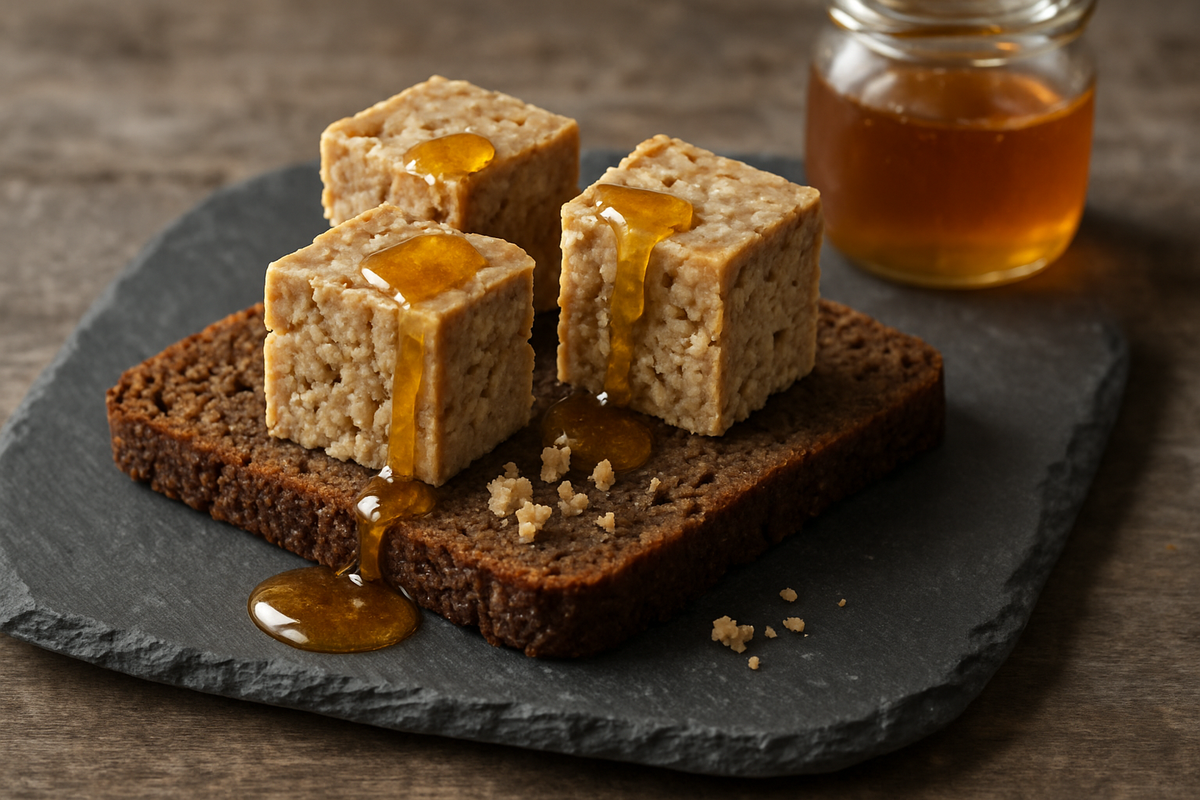From Brunost to Gammelost: Norway's cheese map and where to try it
Cheese in Norway is more than just a sandwich filling. Sweet caramel Brunost is a popular souvenir, delicate Jarlsberg is an export hit, and pungent fermented Gammelost is the pride of Slow Food enthusiasts. Let's take a look at which cheeses are worth trying, where they are made between the fjords and mountain "setras," and how to serve each variety correctly to bring out its northern character.
Brunost — why is the cheese brown and sweet?
Brunost is not made from curd, but from whey: it is evaporated until the milk sugar lactose caramelises, after which the mass is cooled and cut into bars. Variants:
- Gudbrandsdalsost — cow's and goat's milk, the gold standard;
- Fløtemysost — more cream, milder taste;
- Ekte Geitost — 100% goat's whey, brighter acidity.
Eaten in thin slices on bread or waffles; ideal with filter coffee and cloudberry jam.

What is Jarlsberg famous for and where is it made?
Jarlsberg is a semi-hard cheese with large holes, invented in the 1950s at the agricultural university in Ås. It has a creamy, nutty flavour with a hint of caramel and is aged for 3–15 months. It is produced by Tine in Østfold and exported to 35 countries. The best way to taste it is with an "ost & øl" set at the Godt Brød coffee shop (Bergen): a slice of Jarlsberg, berry chutney and light ale.

Nøkkelost and its spicy spices
The name translates as "key cheese". A semi-hard cow's milk cheese with added caraway seeds and "nelikk" (cloves). The spices came with Hanseatic merchants, hence the spicy profile. Ideal in hot sandwiches — it melts better than Jarlsberg, leaving a spicy aroma.
What is Gammelost and why is it called "Viking cheese"?
Gammelost ("old cheese") is a low-fat curd cheese fermented with Mucor mucedo fungus, then dried for 4–6 weeks. It has a sharp aroma and a pungent, salty taste. It is produced exclusively on the Tine Vik farm (Sognefjord) and has been awarded the Slow Food Presidia label. It is served thinly sliced with rye bread and Lynghonning honey for a contrast of sweet and sharp flavours.

Table of cheeses and food pairings
| Cheese | Texture | Taste | Best drink | Where to try |
|---|---|---|---|---|
| Brunost (Gudbrandsdal) | Semi-hard | Caramel, sweet | Filter coffee, Brut cider | Mathallen Oslo, Heidrun stand |
| Jarlsberg 9 months | Semi-hard | Nutty, buttery | APA beer, Linie aquavit | Kaffistova (Oslo) |
| Nøkkelost | Semi-hard | Cumin, cloves | Light lager | Bondens Marked Bergen |
| Gammelost | Hard | Sharp, mushroom | Strong tea, mead | Vik Ost Festival (June) |
| Pultost (coarse-grained) | Soft | Sour, caraway | Sour beer "Sour" | Maihaugen Museum (Lillehammer) |
How to organise a cheese tasting at home?
- Take the cheeses out 45 minutes before serving (temperature 18–20 °C).
- Arrange them in order from mild (Brunost) to the strongest (Gammelost).
- Bread: rye grovt brød, crispy knekkebrød, sweet waffles.
- Accessories: heather honey, lingonberry jam, apple must, nuts.
- Drink: Hardanger Brut cider — a versatile pairing for all varieties.
Norwegian cheese is the country's culinary map: the caramel valleys of Gudbrandsdalen, the green meadows of Østfold, the windy slopes of Vik in Sognefjord. Try sweet Brunost on a waffle, melt a slice of Jarlsberg on a hot sandwich, dip into the spicy flavour of Nøkkelost and bravely try a crumb of Gammelost — and you will discover Norway from an unexpected, cheesy side.





2 comments
Log in to leave a comment